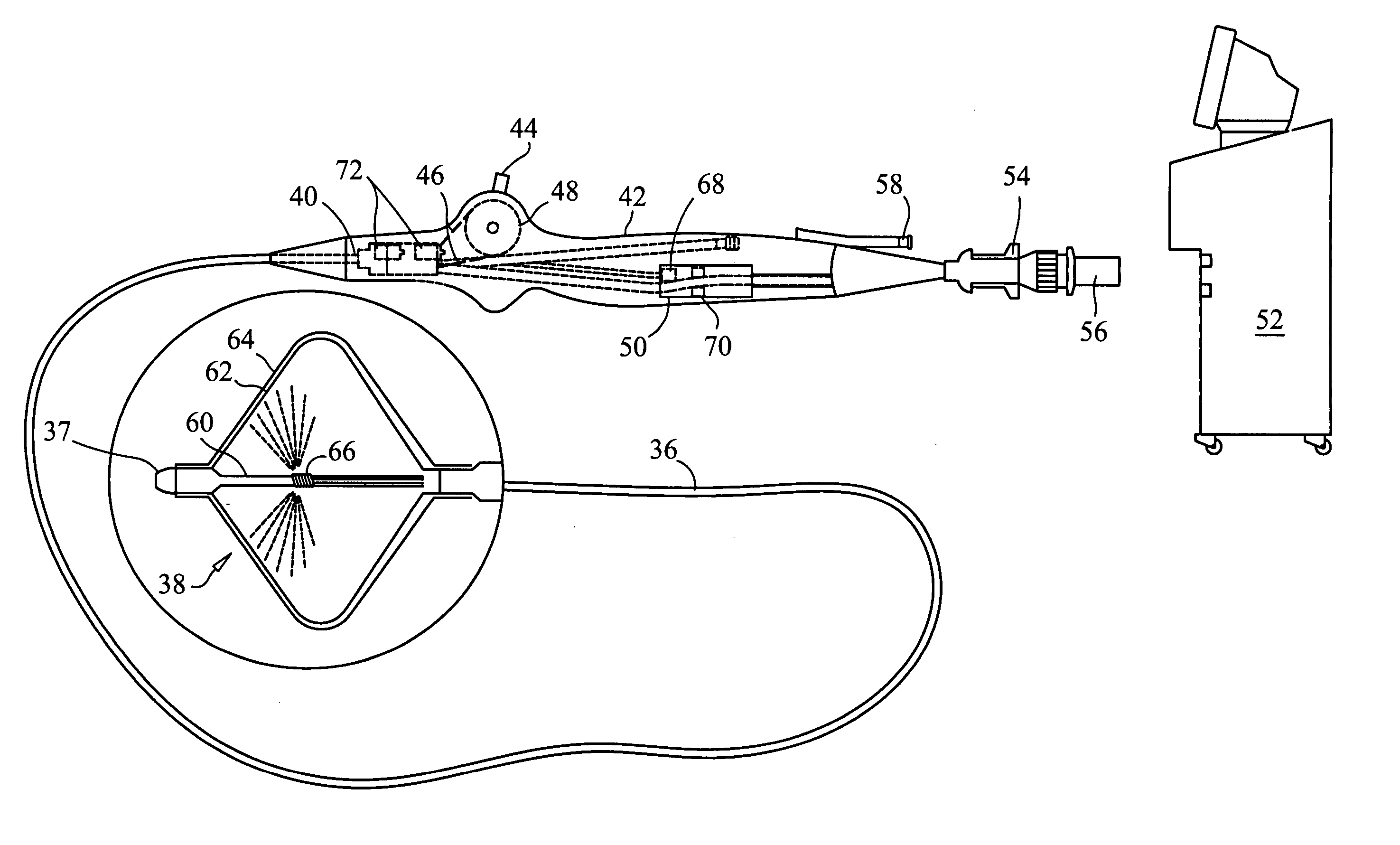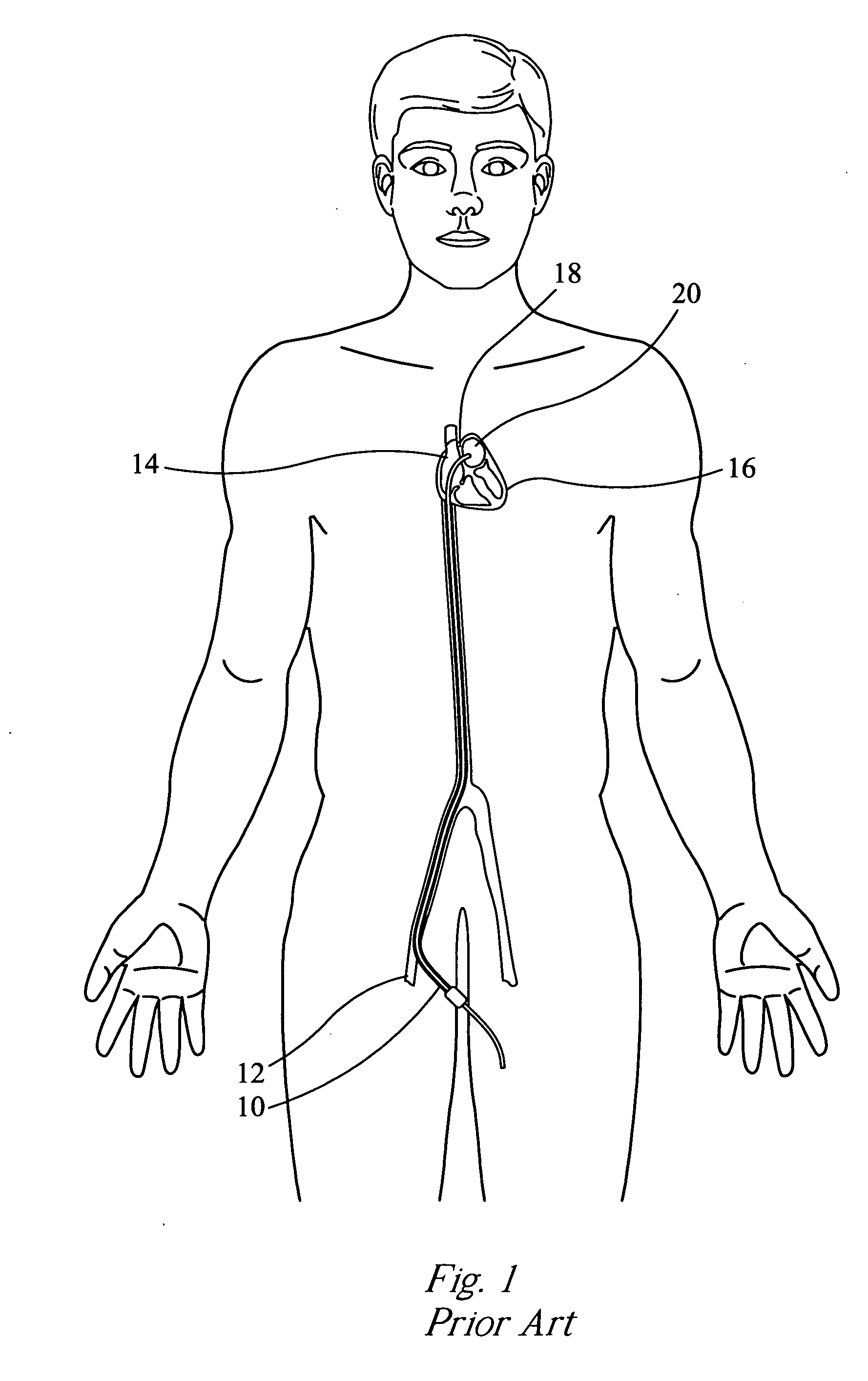Wide area ablation of myocardial tissue
a myocardial tissue and wide area technology, applied in the field of interventional electrophysiology and minimally invasive cardiovascular surgery, can solve the problems of irregular interior surfaces of the heart's chambers, difficulty in maintaining the device in a selected position and orientation, and difficulty in actual topography of the tissue being treated
- Summary
- Abstract
- Description
- Claims
- Application Information
AI Technical Summary
Benefits of technology
Problems solved by technology
Method used
Image
Examples
Embodiment Construction
[0039] With respect to the treatment of atrial fibrillation, it is believed that the creation of a conduction block or an interruption of the electrical signal flow path from the region of the atrium and the pulmonary vein is an effective treatment for atrial fibrillation. Further, while it is believed that the creation of a narrow annular lesion at or very near the ostium of the pulmonary vein is an effective way to create a conduction block, notwithstanding the difficulty of making such a lesion, it is believed that creating of one or more non-annular lesions in different locations is not only more readily accomplished with reliability but it is more clinically effective.
[0040] In view of the preceding, the present invention provides apparatus and methods for modifying the electrophysiological properties of large areas of tissue rather than narrow, annular lesions at locations that are not confined solely to the ostium, although ablation of tissue near the ostium and / or in the at...
PUM
 Login to View More
Login to View More Abstract
Description
Claims
Application Information
 Login to View More
Login to View More - R&D
- Intellectual Property
- Life Sciences
- Materials
- Tech Scout
- Unparalleled Data Quality
- Higher Quality Content
- 60% Fewer Hallucinations
Browse by: Latest US Patents, China's latest patents, Technical Efficacy Thesaurus, Application Domain, Technology Topic, Popular Technical Reports.
© 2025 PatSnap. All rights reserved.Legal|Privacy policy|Modern Slavery Act Transparency Statement|Sitemap|About US| Contact US: help@patsnap.com



